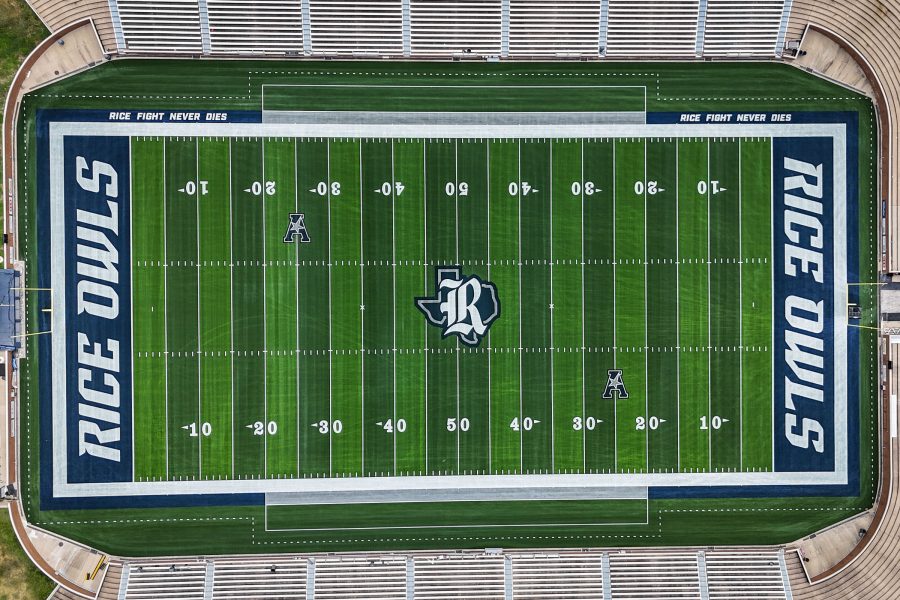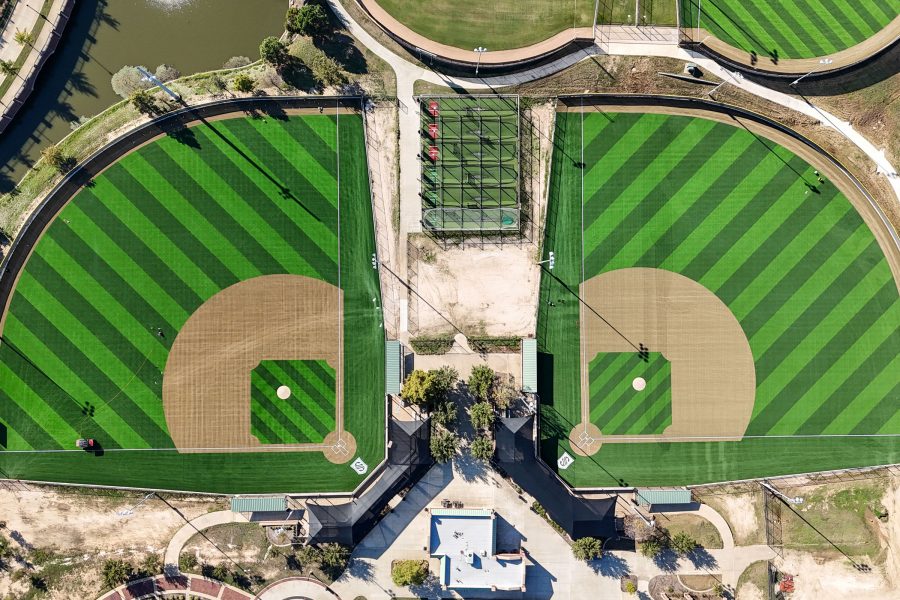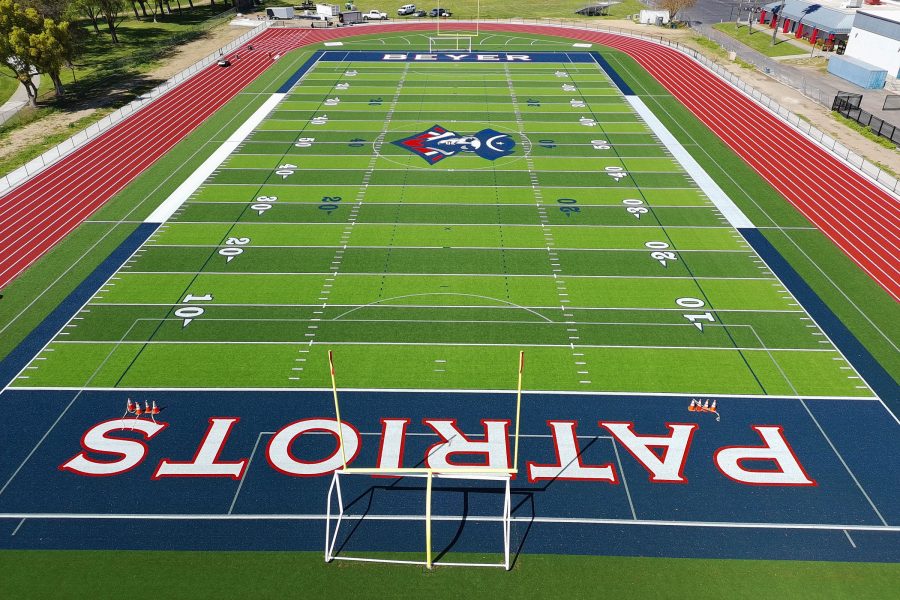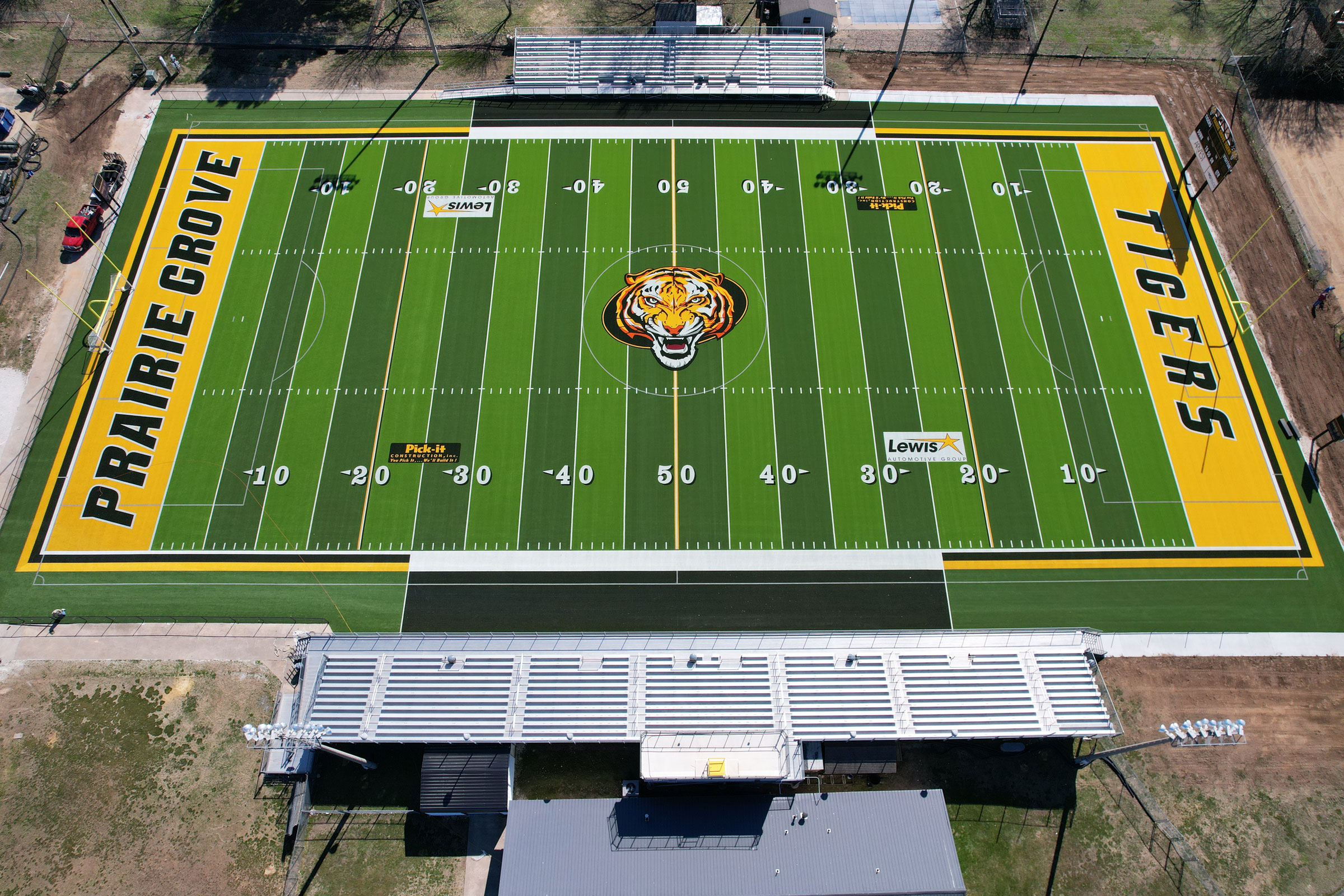Story at a glance:
- TenCate’s ONE-DNA turf system uses a single polymer, making recycling easier, reducing waste, and transforming turf from a disposal cost into a valuable asset.
- Pivot turf from TenCate mimics real grass using three polyethylene yarn types, eliminating performance infill and enhancing player experience through biomimicry, comfort, and performance across all sports.
- From design to end-of-life, TenCate prioritizes sustainability—backed by life cycle assessments, third-party data, and global standards in its continued effort toward reducing turf’s environmental impact at every stage.
Once confined to sports fields and suburban lawns, artificial turf has steadily evolved—technologically, aesthetically, and ecologically. Today’s synthetic grass looks less like plastic and more like nature, with an expanding role in the built environment. From urban courtyards and rooftop terraces to sports fields and playgrounds, turf is now seen as a water-conscious, low-maintenance solution that doesn’t compromise design integrity.
Still, concerns around petroleum content, heat retention, and end-of-life waste persists. In response, the industry is shifting. Manufacturers are rethinking turf design through the lens of circularity—prioritizing recyclable materials, reusable infills, and smarter systems that reduce life cycle impacts.
Few understand that shift better than Colin Young, group R&D director at TenCate Grass (TenCate), a Netherlands-based turf manufacturer helping to lead the charge toward high-performance, lower-impact systems. “We were founded in 1704, with roots in textile weaving,” says Young, who joined TenCate in 2018. He has 25 years of experience in turf science. The company long supplied fibers, yarns, and backings used by many of the industry’s best-known brands before entering the synthetic turf space as it emerged in the 1960s.
By the late 1990s third-generation turf—with longer fibers and rubber crumb mixed with sand—helped bridge the gap between synthetic and natural surfaces. “But more recently concerns have emerged around microplastics and the environmental impact of rubber crumb,” Young says. “And while performance had improved, it still wasn’t quite grass.”
That challenge led TenCate to develop Pivot™, what it calls fourth-generation turf. “It’s really been our focus in recent years; we’ve eliminated performance infill altogether,” Young says. “We’ve also engineered the yarns to act as a surrogate, replicating the best aspects of natural grass.”
Designed to Perform

By 2023 more than 70 fields were installed nationwide using Pivot. One of the first high-profile US installs was at Rice University in Texas, where flooding required a quick replacement. Photo courtesy of Tencate
Young says Pivot was driven by both environmental considerations and player feedback. “We’re not against rubber,” he says. “But the reality is, players and clients live with it more than they love it. It gets in your shoes, it holds heat, it has a smell. Those were all drivers for change.”
Instead of imitating rubber, the team turned to nature. “Pivot’s design is based in biomimicry, featuring three types of yarns—straight, textured, and curled—that mimic the soil structure and play characteristics of grass,” Young says. “You can’t design turf for just one type of athlete or person—it has to work for everyone. That’s what makes Pivot special. It feels like real grass because that’s exactly what it was designed to do.”
Development began in 2018 and included nearly 60 iterations. With full control of the manufacturing and installation process, TenCate was able to prototype quickly. That agility enabled an early pilot at PSV Eindhoven, a top-tier Dutch soccer club, where real-world player feedback helped shape the product.
That made Frans Janssen, commercial director at PSV, very excited. “The input and feedback provided by our players and staff give TenCate Grass the opportunity to test new developments in a real-life environment,” he previously said, noting a continued partnership into 2026.
Young is quick to point out that such advancements took place, and continue to take place, in the company’s Center for Turf Innovation (CTI), which is based in the Netherlands and comprises a 9,800-square-foot indoor testing facility with all the latest technologies. “CTI blends material science with real-world testing, incorporating high-speed video, kinematic data, and player feedback,” he says. “It’s not just a facility. It’s a way of working. We can also take it on the road. Anywhere there are players, we can be there.”
With that in mind, Pivot launched in the US about six months after its European debut. By 2023 more than 70 fields were installed nationwide. One of the first high-profile US installs was at Rice University in Texas, where flooding forced a quick replacement.
TenCate stepped in, completing the project on an accelerated timeline. The response from players and coaches was overwhelmingly positive.
In a statement after the project was completed, Rice Vice President and Director of Athletics Tommy McClelland applauded both the speed at which TenCate was able to move from problem to solution and the foresight to have a sustainable solution at the ready.
“I hope this serves as a model for others when faced with replacing their artificial playing surfaces in the future,” McClelland says.
Changing the Conversation

Photo courtesy of Tencate
The next hurdle for TenCate wasn’t playability—it was sustainability. “At TenCate sustainability and environmentalism drive everything we do,” Young says.
That focus begins with design. “Every system is evaluated not just on safety and playability but also on how much energy it consumes, how long it lasts, and how easily it can be recovered and recycled,” he says. “We’re very aware of the fact that we’re a plastics company putting product into the open environment. We design with circularity in mind—always.”
TenCate’s ONE-DNA™ product line is also central to that effort. A monomaterial turf system made entirely of polyethylene, it eliminates the mix of polymers that historically complicated recycling. “With ONE-DNA we’re creating monomaterial systems that can move straight back into polyethylene recycling streams,” Young says. “We’ve spent years solving the technical challenges, and it’s paying off. Clients are excited because it changes the conversation around end-of-life planning. Instead of a liability, they suddenly have an asset.”
We design with circularity in mind—always.
Where removing a field once came with disposal costs, ONE-DNA changes the equation, Young says. Reclaimed polyethylene has market value—and could even generate revenue. “It makes the total cost of ownership more attractive. Sustainability and commercial value go hand-in-hand.”
That message is gaining traction with municipalities, colleges, and private clients alike. “Whether it’s architects, city planners, or local sports organizations, people want to make sure they’re buying a responsible product,” Young says. “Now they no longer have to choose between high performance and lower impact. They get both.”
For legacy systems still in place, TenCate has created recovery programs that support mechanical and chemical recycling. “We’re already doing this,” Young says. “But the next step is making it easier and more scalable—so these ONE-DNA products can feed back into circular systems with minimal intervention.”
Longevity is also critical, Young says, and key to so many of TenCate’s products. For example, Young says, “While most turf lasts eight to 10 years, Pivot is engineered for 50% more life—thanks to refined chemistry, UV stabilization, and the elimination of abrasive infills. A fully polyethylene system lasts longer and performs better.”
That performance isn’t just promised—Pivot is backed by TenCate’s industry-leading 12-year warranty, life cycle assessments, and third-party data. Especially in Europe, where sustainability regulations are stringent, TenCate adheres to rigorous reporting standards. “It’s not just about the turf,” Young says. “It’s the full system—delivery, installation, operations, and end-of-life recovery. We evaluate it from every angle.”
Shaping the Future

Pivot turf from TenCate mimics real grass using three polyethylene yarn types, eliminating performance infill and enhancing player experience through biomimicry, comfort, and performance across all sports at every stage. Photo courtesy of Tencate
TenCate Americas CEO Joe Fields shares that full-picture perspective. “Our mission is to build healthier, more beautiful communities,” he says. “Healthier encompasses not only the well-being of athletes and children who enjoy our turf, but also the broader environmental impact. More beautiful goes beyond aesthetics. We are committed to making sure our manufacturing operations and products are as environmentally friendly as possible.”
That commitment includes eliminating added PFAS from production and partnering on turf recycling. “We remain dedicated to the original goal of synthetic turf: enabling more physical activity in areas where natural grass isn’t feasible,” adds Fields, who operates TenCate’s US headquarters out of Chattanooga. “And by continuously innovating, we lead the industry in creating artificial turf that is not only more sustainable and durable, but also high-performance for athletes, homeowners, and communities.”
Young says vertical integration is key to that mission as well. “In many regions TenCate manages every step—from consultation and base design to logo layout, installation, and recycling. It’s what allows us to innovate at scale. When you control the whole system, you can make every part of it better.”
That said, with population density on the rise and cities facing both water shortages and climate volatility, outdoor spaces are under steady pressure. Turf is increasingly positioned as part of the solution, and TenCate sees its future as driven by performance, built for circularity, and shaped by the realities of a changing world.
“While we’ve always been part of the turf industry, we’re now shaping where it’s going,” Young says. “We need durable, year-round, low-water-use surfaces that support play, health, and community. If we want people to be active and outdoors, we need the infrastructure to support it. Turf is a fundamental part of that solution.”

